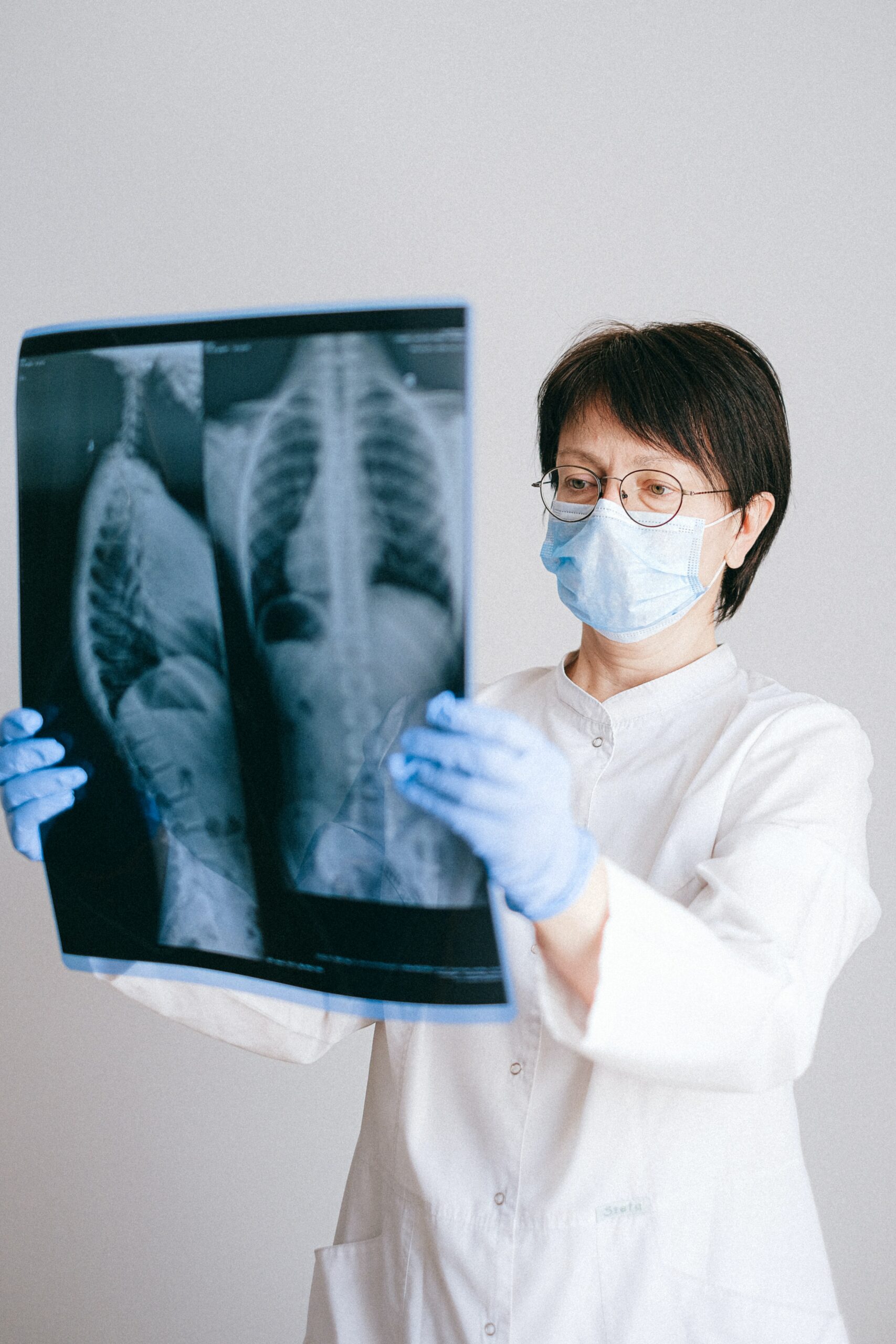Four Types of Mesothelioma
Different types of mesothelioma and its cells affect a patient's symptoms, treatment, and prognosis.

How Many Types of Mesothelioma Are There?
There are four mesothelioma types, as the disease attacks different organs depending on where someone was exposed. Mesothelioma, being one of the rarest types of cancer, with around 3,000 new diagnoses every year, still remains an issue today as the use of it was very common in the building of homes prior to the 1980s.
Because there are several types of mesothelioma and multiple cell classifications, it is important to know the differences and follow up with a medical specialist with experience who can truly help you in your mesothelioma journey. If you have just been diagnosed with mesothelioma, keep reading to learn more about your specific type of mesothelioma. As always, you should always consult a medical professional.
What are the Four Types of Mesothelioma?
There are four mesothelioma types and three primary mesothelioma cell types. These mesothelioma cells and classifications affect how cancer forms and spreads within a patient’s body. Discover the signs and symptoms associated with the variations of mesothelioma. Mesothelioma cancer develops in the tissues lining different organs in the body. There are four types of mesothelioma: pleural, peritoneal, pericardial, and testicular. These four kinds are classified by the locations where mesothelioma develops in a patient’s body.
Pleural Mesothelioma – Lungs
Many people confuse pleural mesothelioma and lung cancer as they are both cancers of the lungs. However, the pleural mesothelioma type develops in the lining of the lungs, whereas lung cancer develops within the lungs themselves. This mesothelioma type is the most common, accounting for around 75% of all mesothelioma diagnoses. Asbestos is often the cause of pleural mesothelioma, as the fibers are inhaled and get trapped in the lungs.
These asbestos fibers can cause lung inflammation and, therefore, cancer. Symptoms of pleural mesothelioma often include pain in the chest, shortness of breath, and lumps under the chest. The 5-year survival rate for pleural mesothelioma is 12%.
Peritoneal Mesothelioma Types – Abdomen
Although pericardial mesothelioma is the second most common form of this cancer, it only accounts for 15 to 20% of all mesothelioma cases. This mesothelioma type affects the lining of the abdomen and abdominal cavity. Asbestos is also the primary cause of this classification of mesothelioma. People with peritoneal mesothelioma cancer often inadvertently swallow asbestos fibers. When swallowed, asbestos fibers can irritate and damage the lining of the abdominal organs and cavity. Common signs and symptoms of peritoneal mesothelioma are weight loss, abdominal swelling, and stomach lumps. The 5-year survival rate for peritoneal mesothelioma is 65%.
Pericardial Mesothelioma – Heart
Mesothelioma forms in the heart’s tissues and is classified as pericardial mesothelioma. Medical professionals are not clear on the origins of pericardial mesothelioma. They suspect asbestos fibers might be the cause but are unsure how they land in the heart’s lining. Pericardial mesothelioma symptoms often include heart palpitations, chest pain, and shortness of breath. Pericardial mesothelioma has an average 5-year survival rate of 9%.
Testicular Mesothelioma – Testicles
Mesothelioma of the testicles is extremely rare, with only a few hundred cases reported. Doctors are unsure of the cause of this mesothelioma type but have found that this cancer most often occurs in men between the ages of 55 and 75. There is also no known set of symptoms for testicular mesothelioma. Additionally, testicular mesothelioma is so rare that the American Cancer Society has not established a mesothelioma survival rate.
Mesothelioma Cell Types
The type of cancer cell can also be classified as mesothelioma. There are three primary types of mesothelioma cells: epithelioid, sarcomatoid, and biphasic. Additionally, there are several rare subtypes of mesothelioma cells that are not considered primary classifications. Medical professionals classify cell types by the way they appear under a microscope.
Epitheloid Mesothelioma
Epithelioid mesothelioma is the most prevalent form, constituting roughly 70% of all mesothelioma cases. Under a microscope, these cancerous cells closely resemble normal mesothelial cells, facilitating diagnosis. Moreover, this subtype offers the most favorable prognosis, with an average survival rate of approximately 8.5 months.
Sarcomatoid Mesothelioma
Sarcomatoid mesothelioma cells account for 25% of cases. The cell characteristics are longer and skinnier than those of epithelioid cells. Sarcomatoid cells affect the survival rate of patients, resulting in a 4 to 6-month median survival rate.
Biphasic Mesothelioma
Conversely, sarcomatoid mesothelioma represents the least common variant, diagnosed in only 10-15% of pleural mesothelioma cases. Characterized by less organized, spindle-shaped cells, it is notably more aggressive, resulting in a slightly lower average survival rate of around 7 months.
Other Rare Cell Types
Mesothelioma has several cell subtypes that are not classified as a primary cell type because there are so few cases. These rare cells are either subtypes of epithelioid or sarcomatoid cells. There are several rare subtypes of mesothelioma cells, including:
- Well-differentiated papillary mesothelioma (WDPM)
- Cystic mesothelioma
- Desmoplastic mesothelioma
- Lymphohistiocytoid mesothelioma
Mesothelioma Treatments According to Type
If you are experiencing any mesothelioma or lung cancer symptoms, you should seek medical attention, as mesothelioma symptoms, curative measures, and prognosis are improved when the cancer is caught early on. Although different, all forms of mesothelioma can be treated with common cancer therapies such as radiation, chemotherapy, and surgery. Additionally, patients may undergo palliative care if their prognosis is poor. It’s important to understand that treatment options for mesothelioma are not necessarily determined by the specific mesothelioma types but rather by the stage and location of the cancer. However, certain treatment approaches may be more common depending on the type.
Chemotherapy for Most Mesothelioma Types
Chemotherapy is a form of cancer treatment that enters a patient’s body, fighting to rid the body of cancer cells. This form of cancer therapy is administered through a medication that kills and shrinks tumors. Despite its effectiveness, chemotherapy can cause side effects such as nausea, anemia, fatigue, and hair loss, necessitating careful management and support for patients undergoing this treatment modality. Pleural mesothelioma, peritoneal mesothelioma, and pericardial mesothelioma utilize chemotherapy as a form of treatment.
Radiation for Peritoneal and Pleural Mesothelioma
Radiation therapy utilizes internal and external high-energy X-rays to kill and shrink cancer cells. It can also decrease the risk of cancer tumors’ metastasis or the spread. Employing high-energy X-rays internally or externally, radiation therapy serves as another frontline defense against mesothelioma types, specifically benefiting patients with pleural and peritoneal mesothelioma.
This treatment approach is not without its challenges, as patients may experience side effects like shortness of breath, hair loss, memory impairment, nausea, and throat discomfort. Only peritoneal and pleural mesothelioma utilize radiation therapy typically.
Surgery – Careful Mesothelioma Treatment Type
Mesothelioma surgery involves a small incision made in the affected area, where the tumor is removed. Surgery can be used alone but is typically used in conjunction with other forms of cancer therapy. While applicable to pleural, peritoneal, and pericardial mesothelioma, surgical interventions require careful consideration, as they can be more complicated based on the stage and often accompanied by other treatments. Surgery can cause side effects such as infections from the wound, excess bleeding, and general pain.
Palliative Treatment – Decreasing Pain
A doctor might recommend palliative care if primary therapies have not proven effective. Palliative care typically works to decrease both physical and mental side effects from cancer or previous treatment. Palliative treatment might involve massage therapy, pain medication, or nutritional supplements. Any patient, no matter the mesothelioma types, can undergo palliative care to create a more comfortable lifestyle for themselves.
Seeking Compensation According to Mesothelioma Type
Paying for treatment can seem like an overwhelming task. If you received a mesothelioma diagnosis, you may be eligible for legal action. Asbestos is a primary cause of mesothelioma, and many people were negligently exposed to asbestos fibers. Whether exposed during work, through your drinking water, or where you live, there are steps you can take to seek financial compensation. Understand your options by connecting with an expert today for a free case evaluation.


